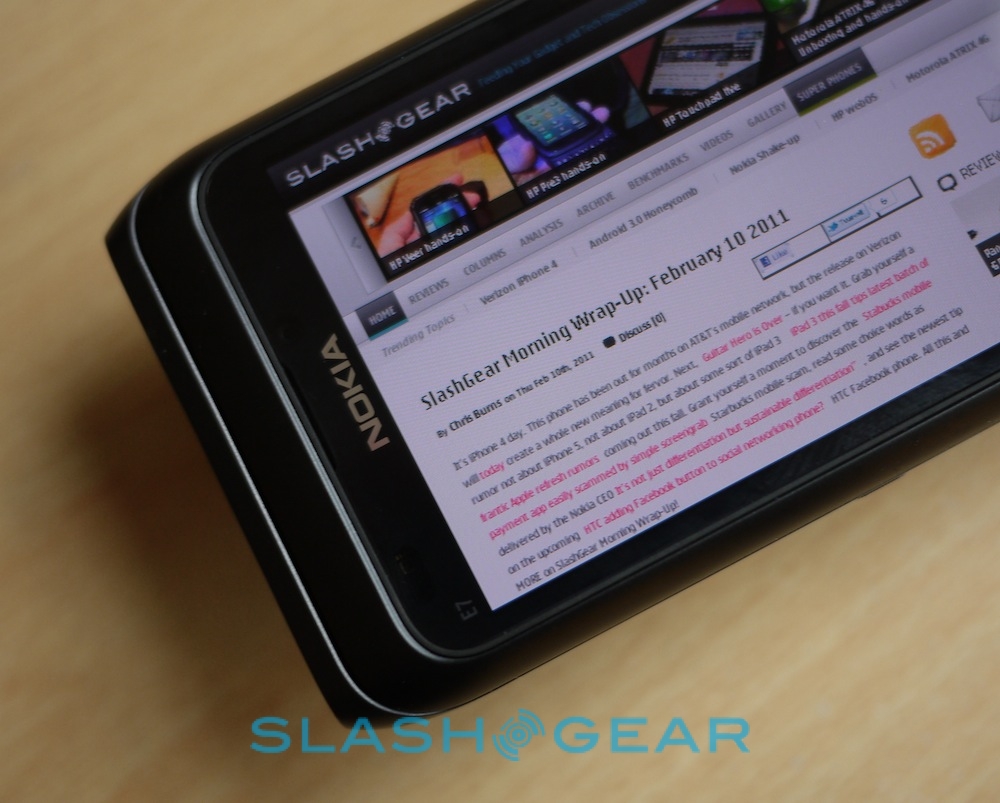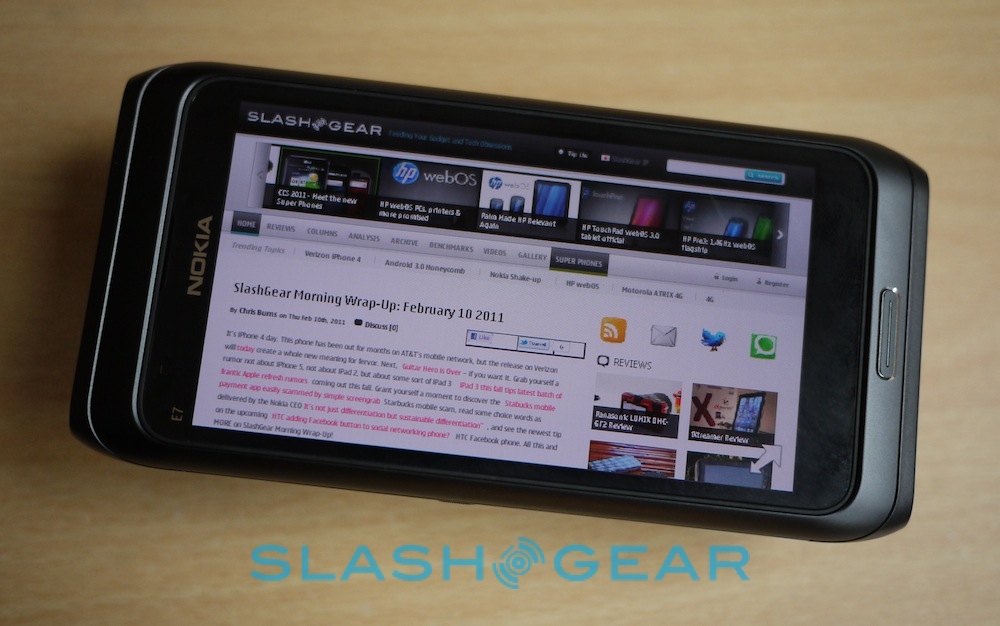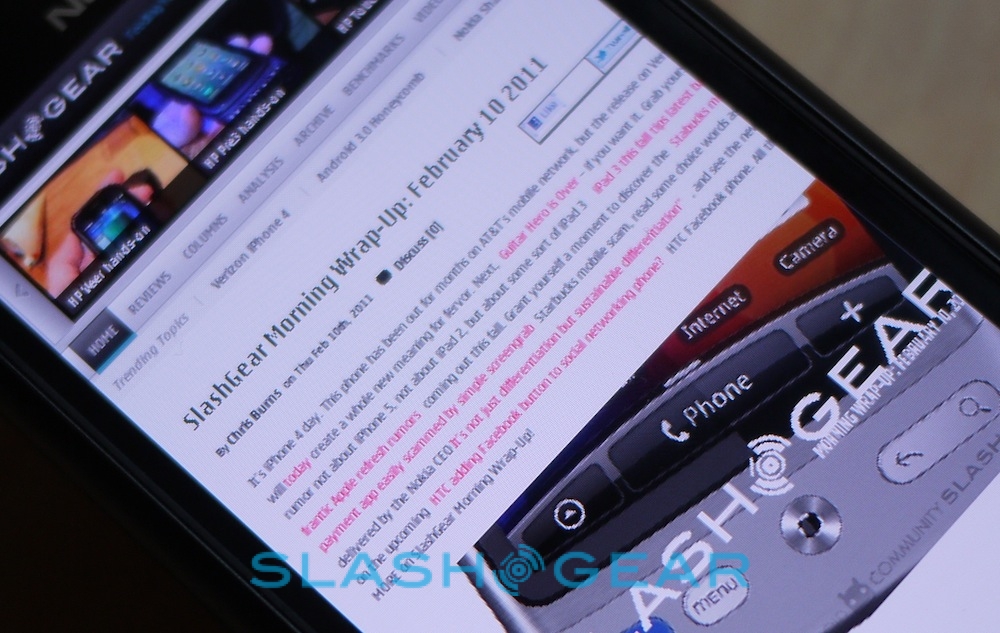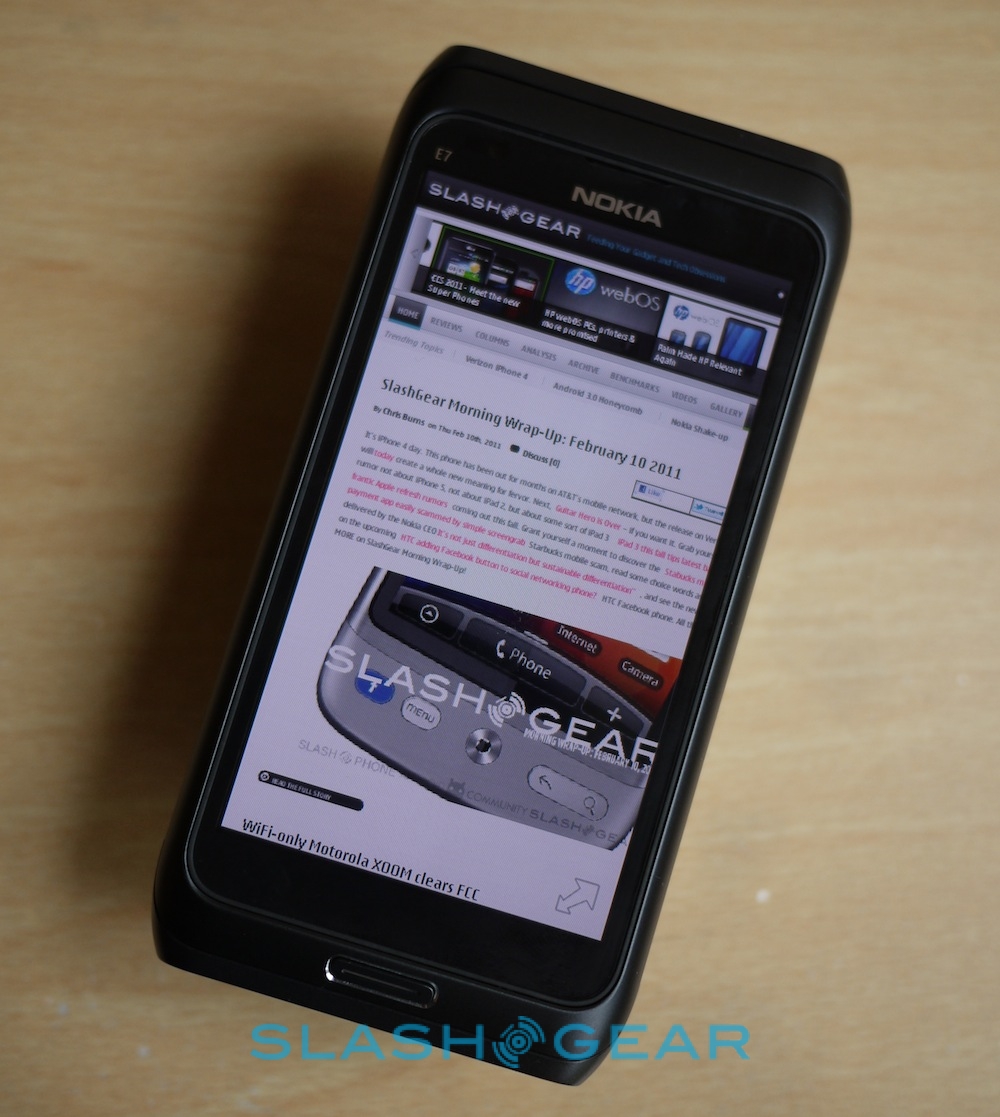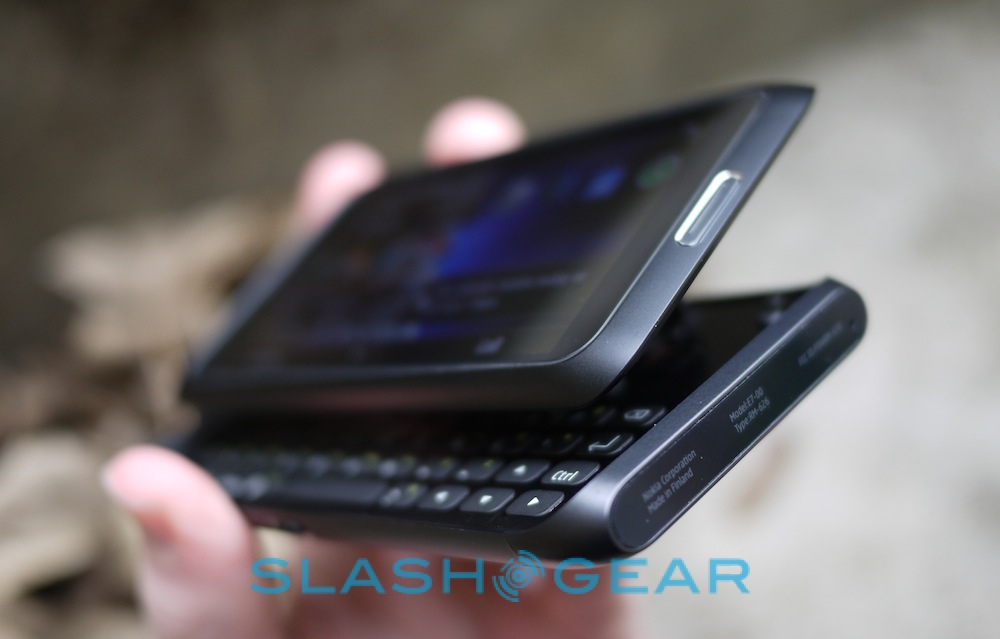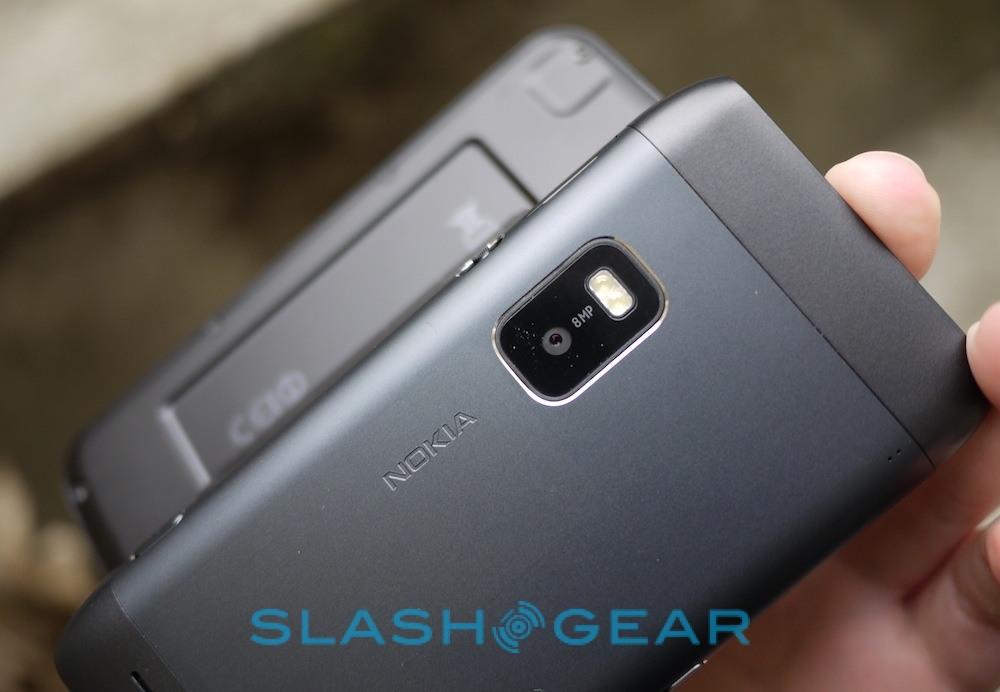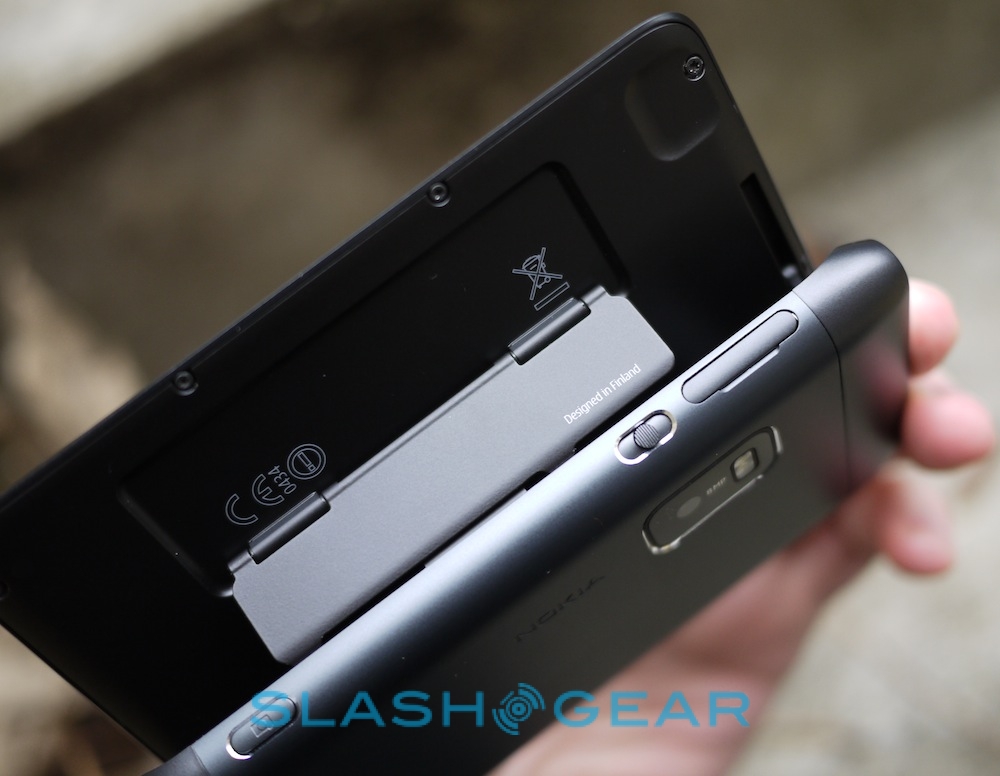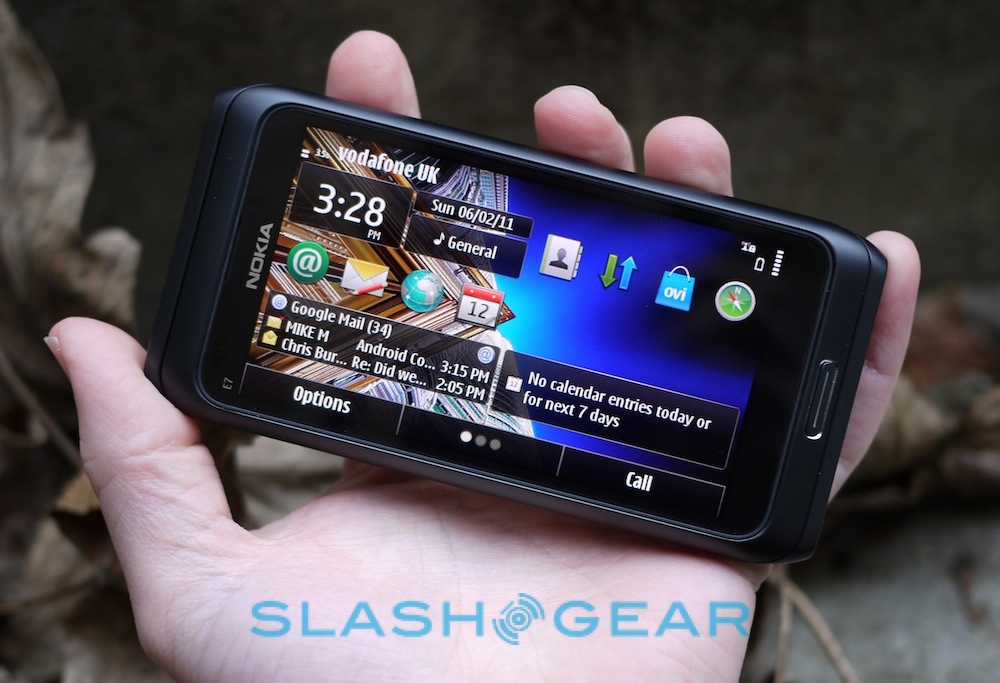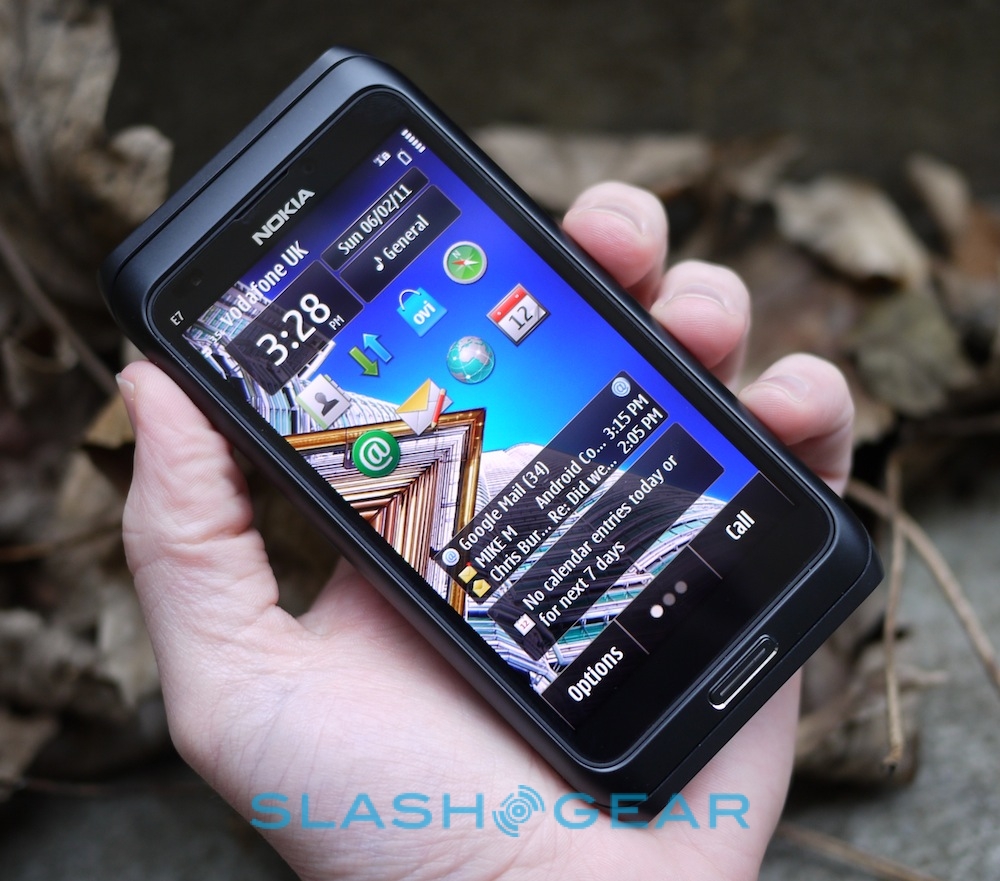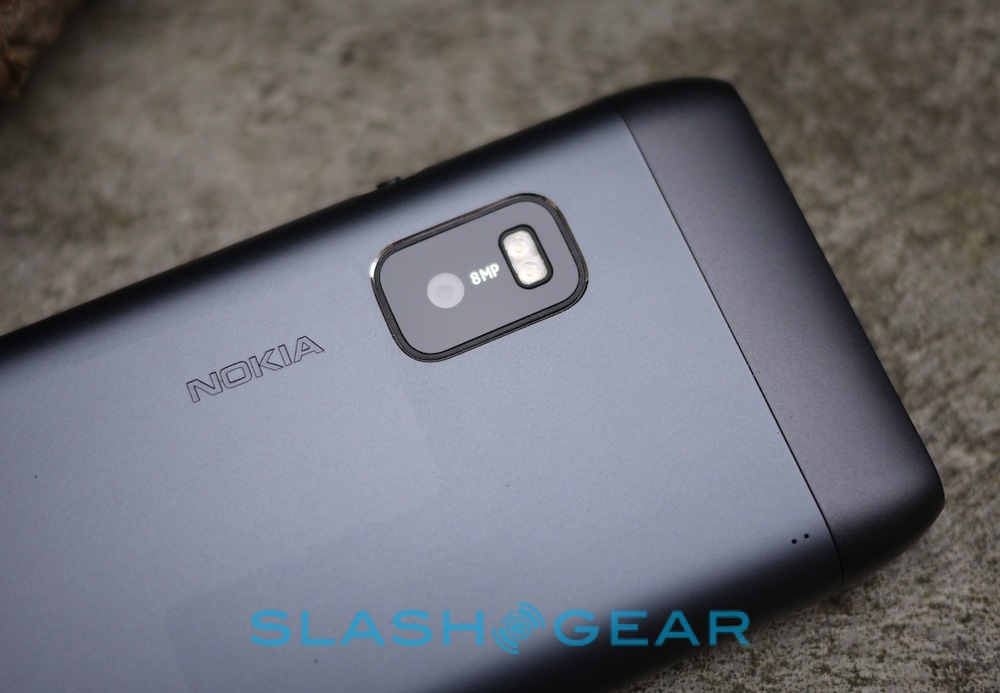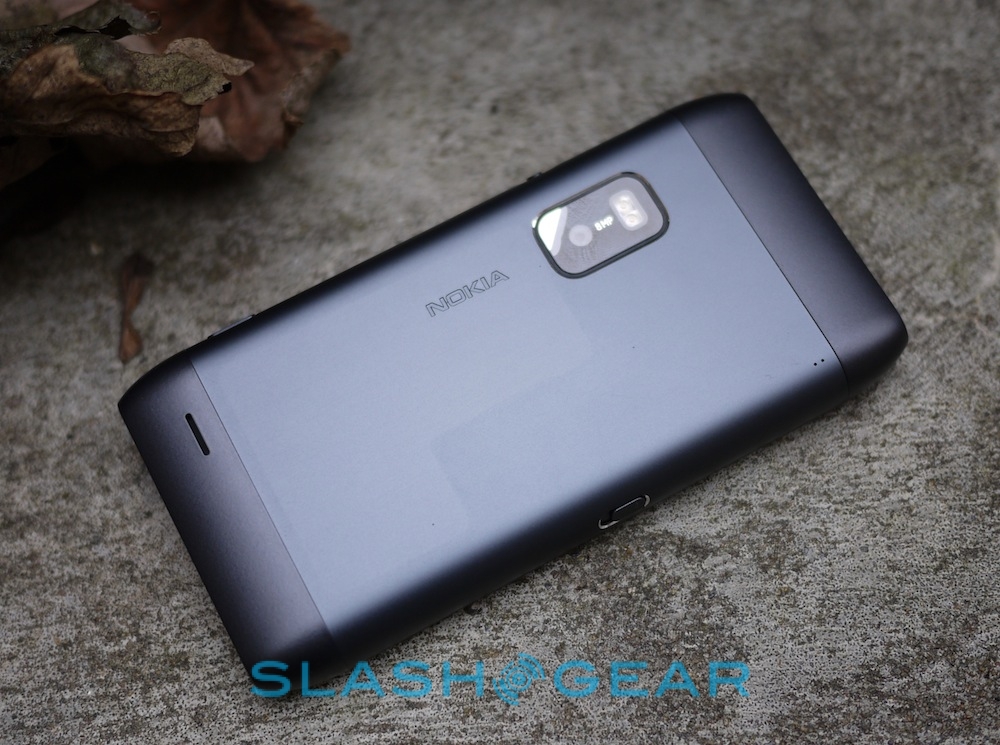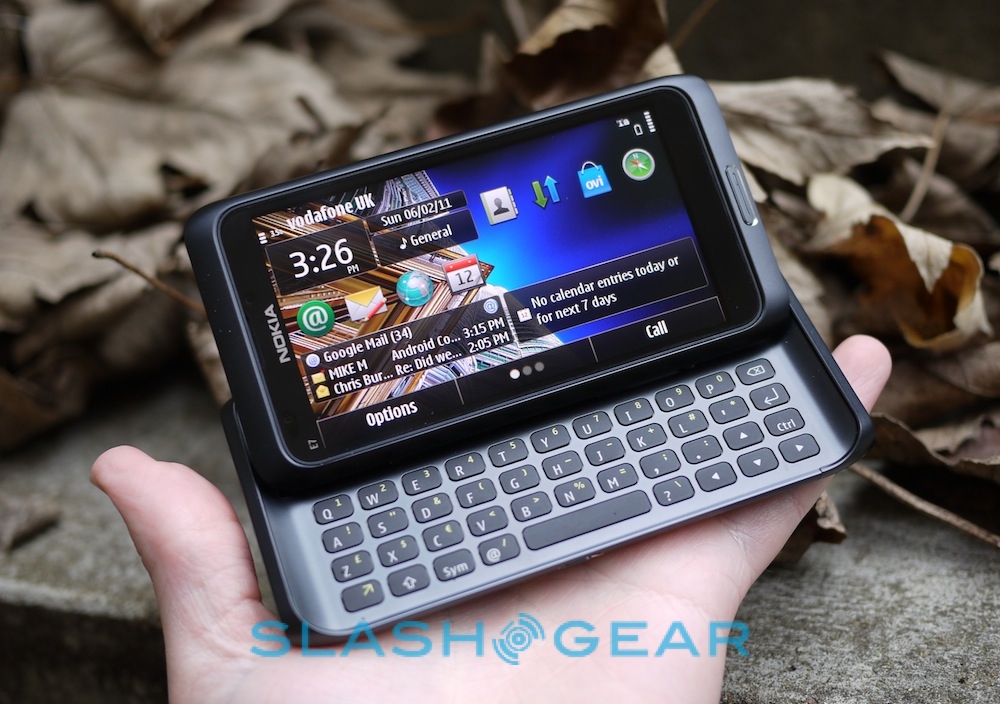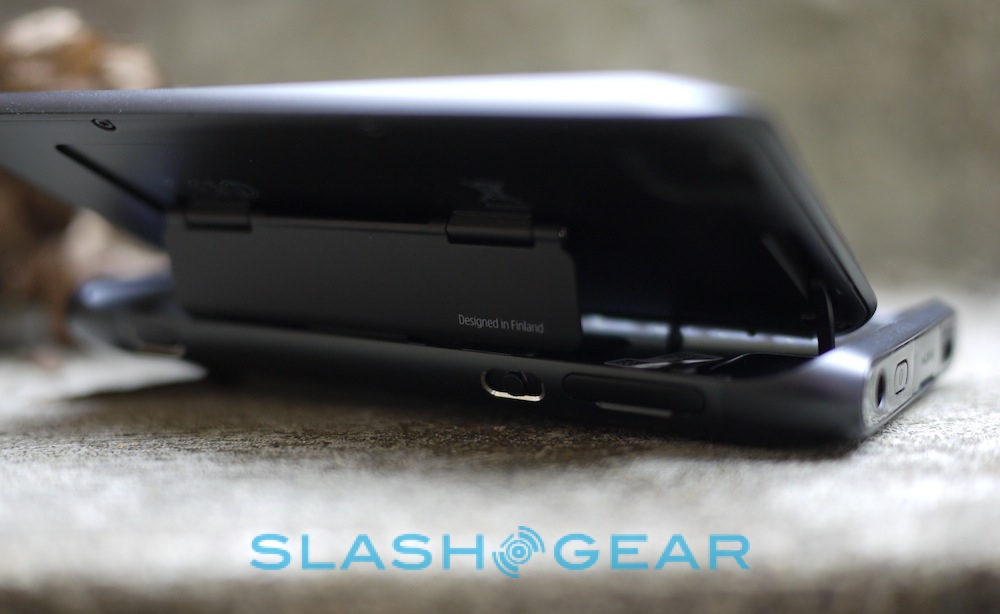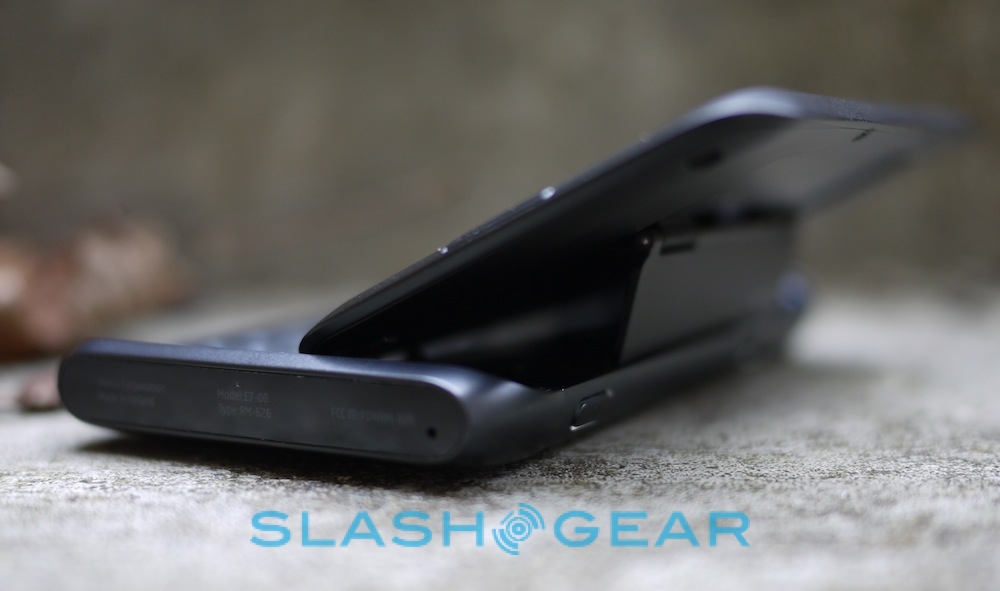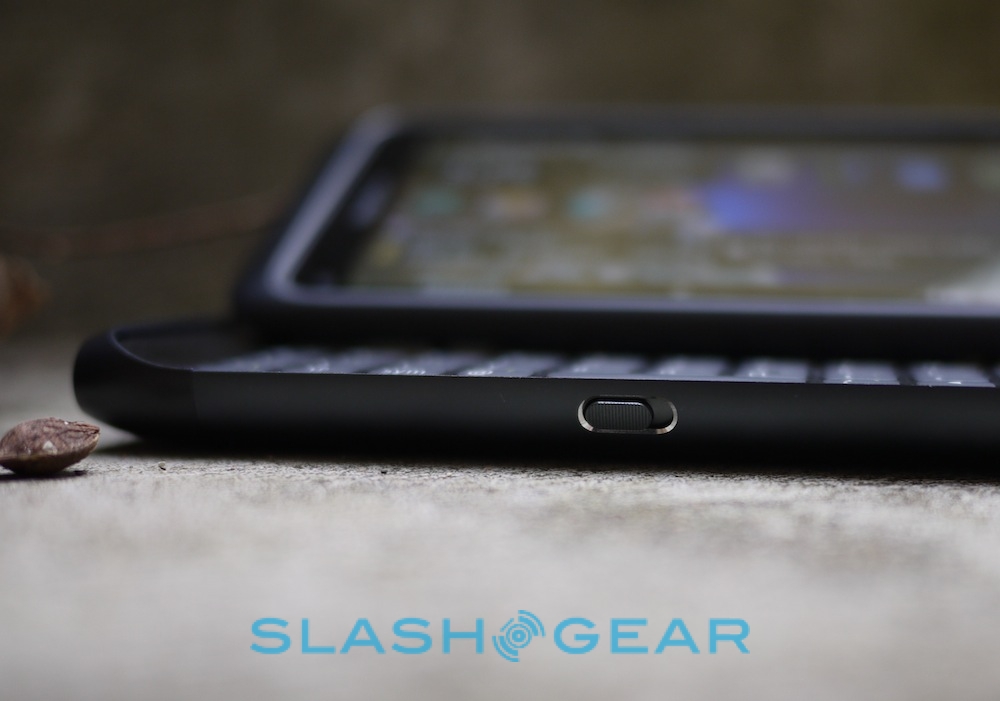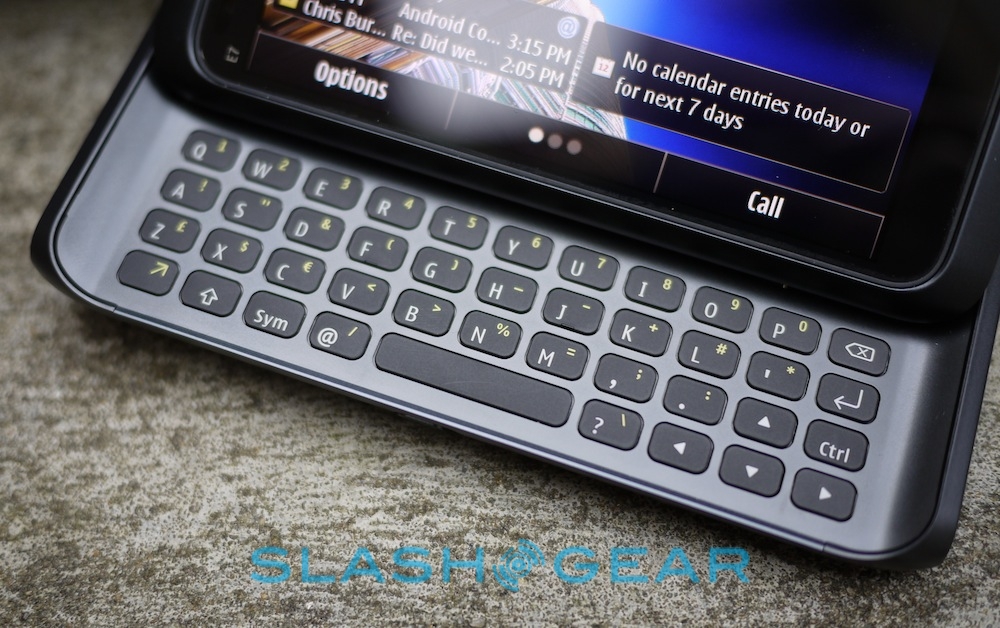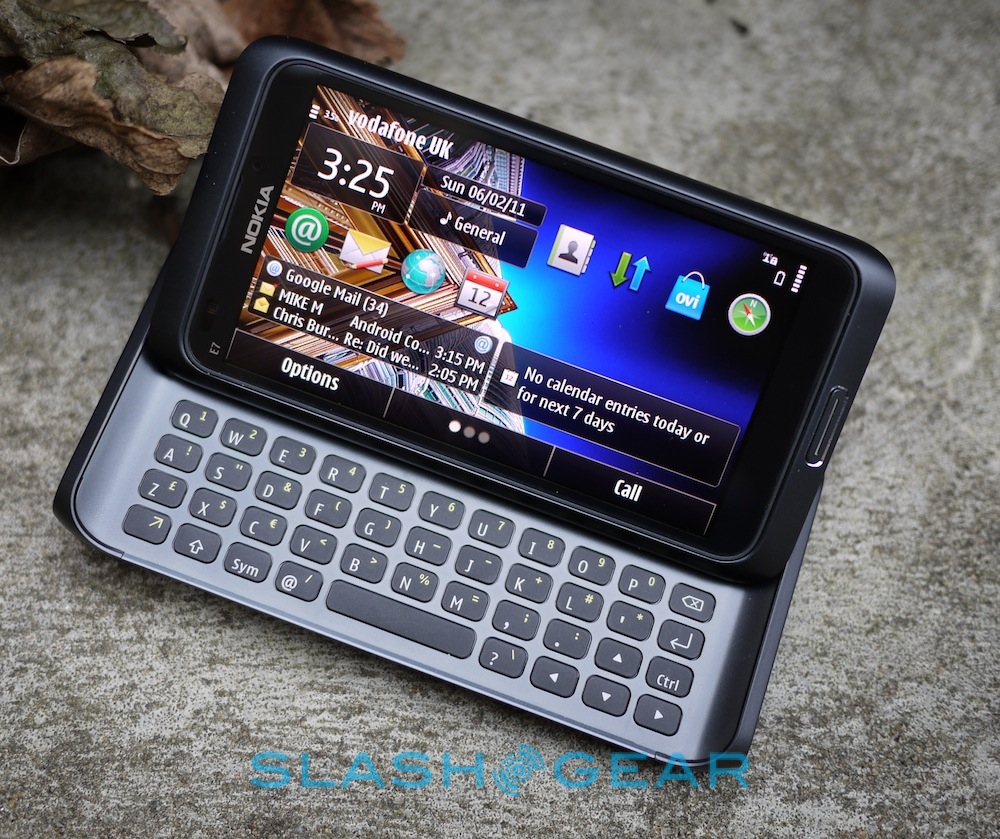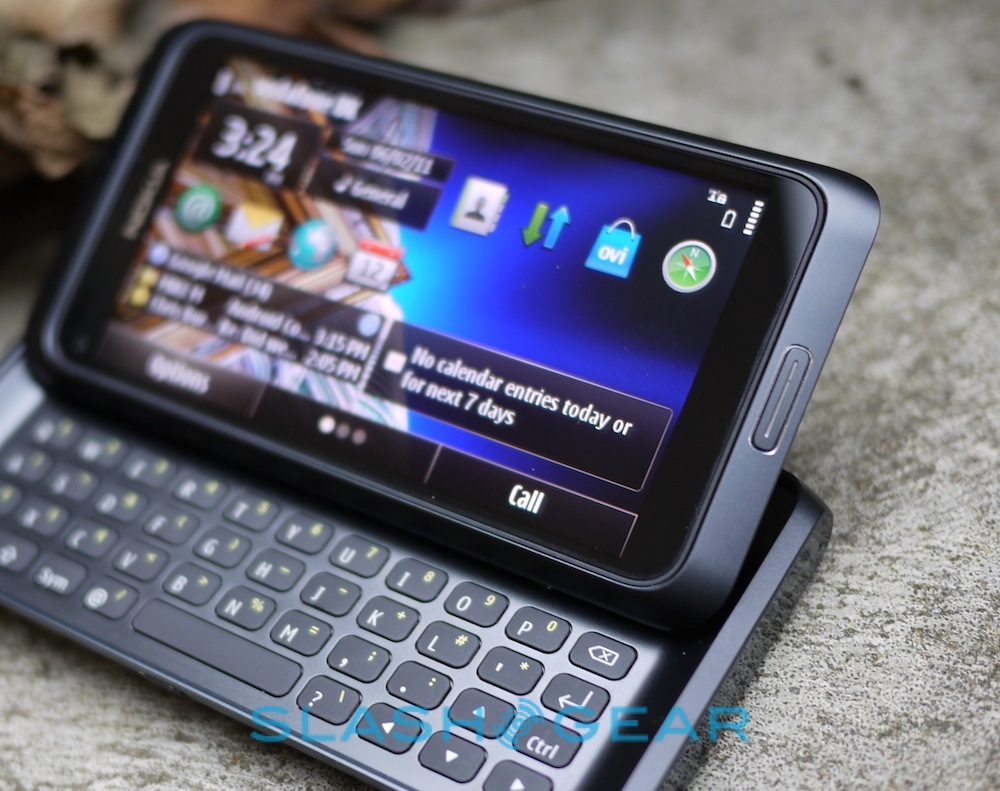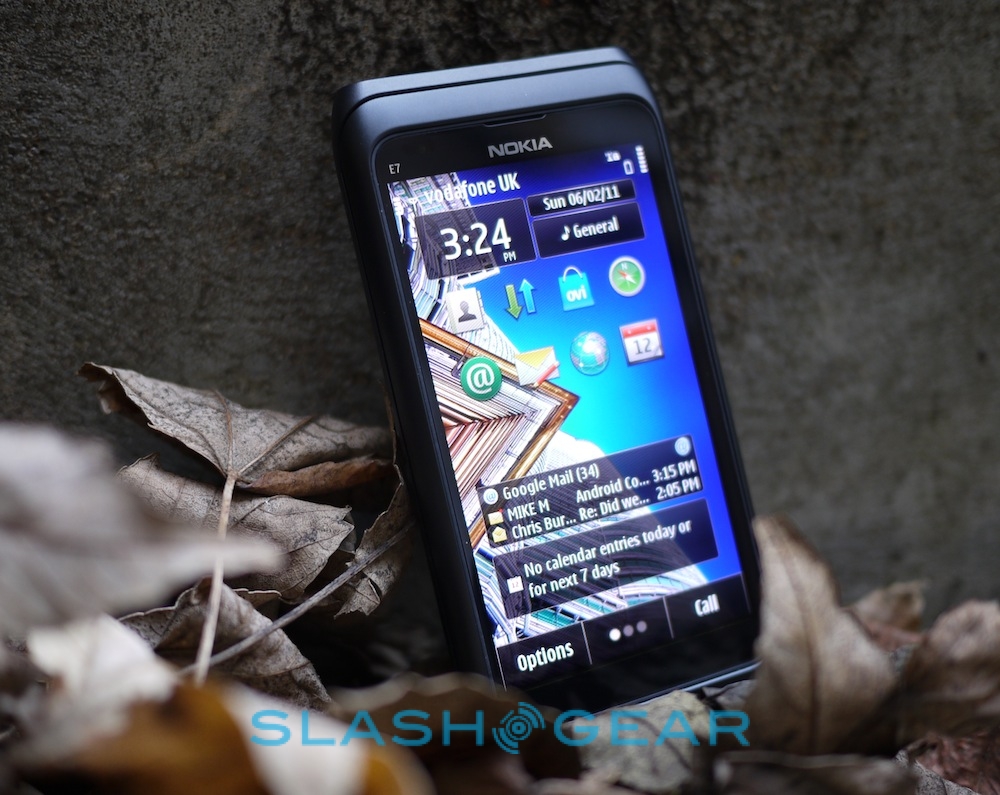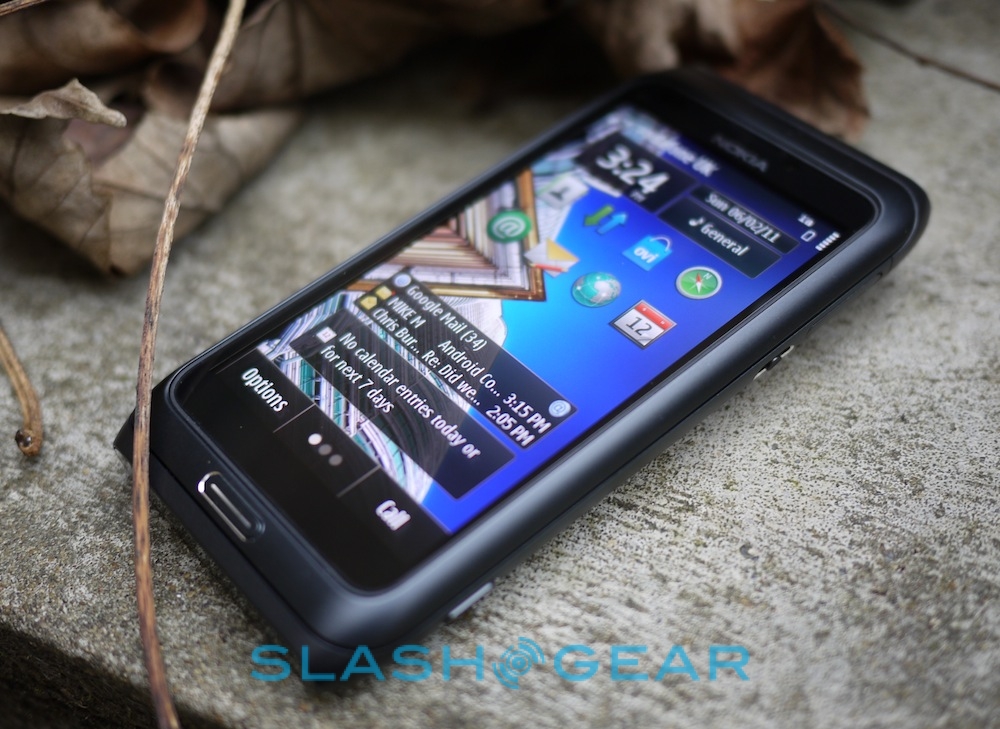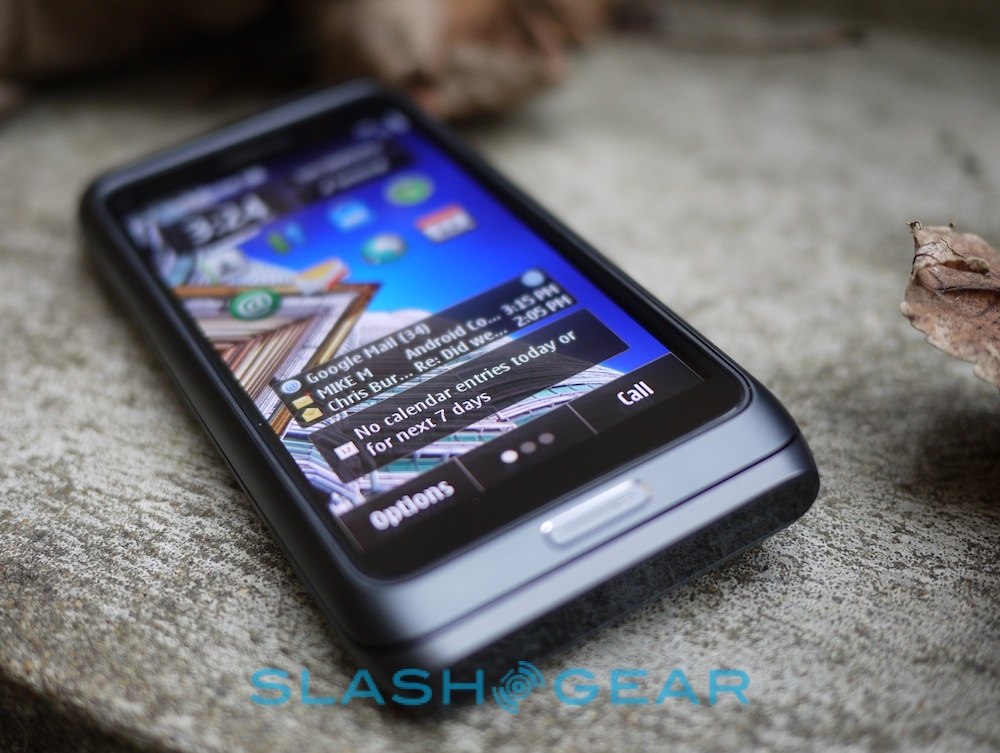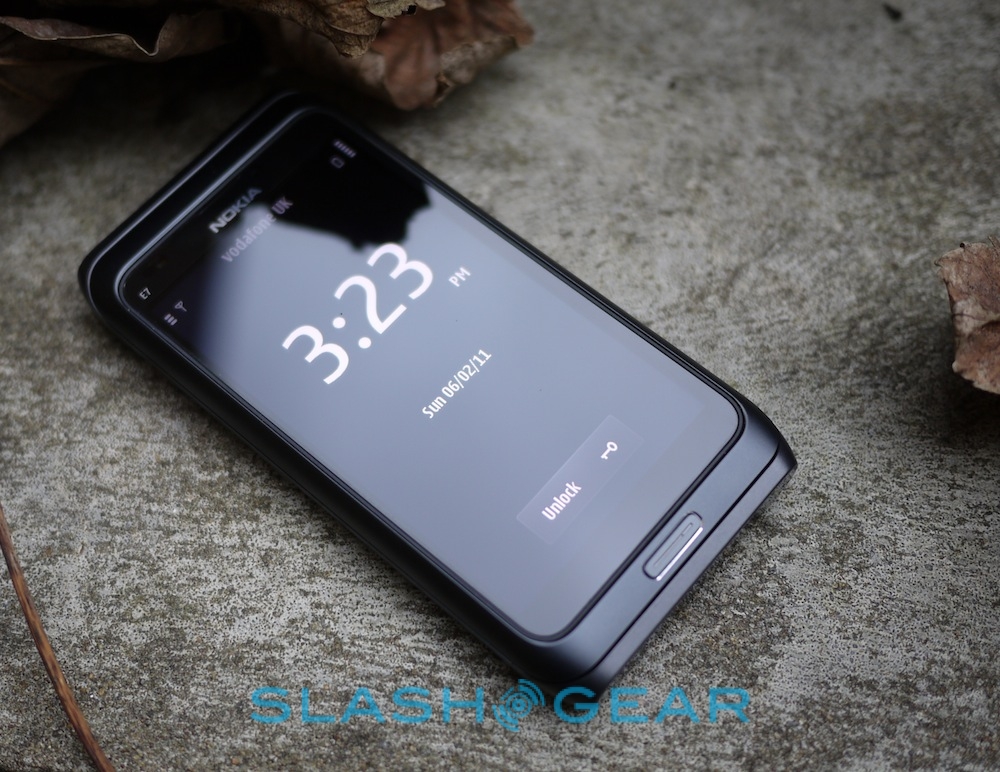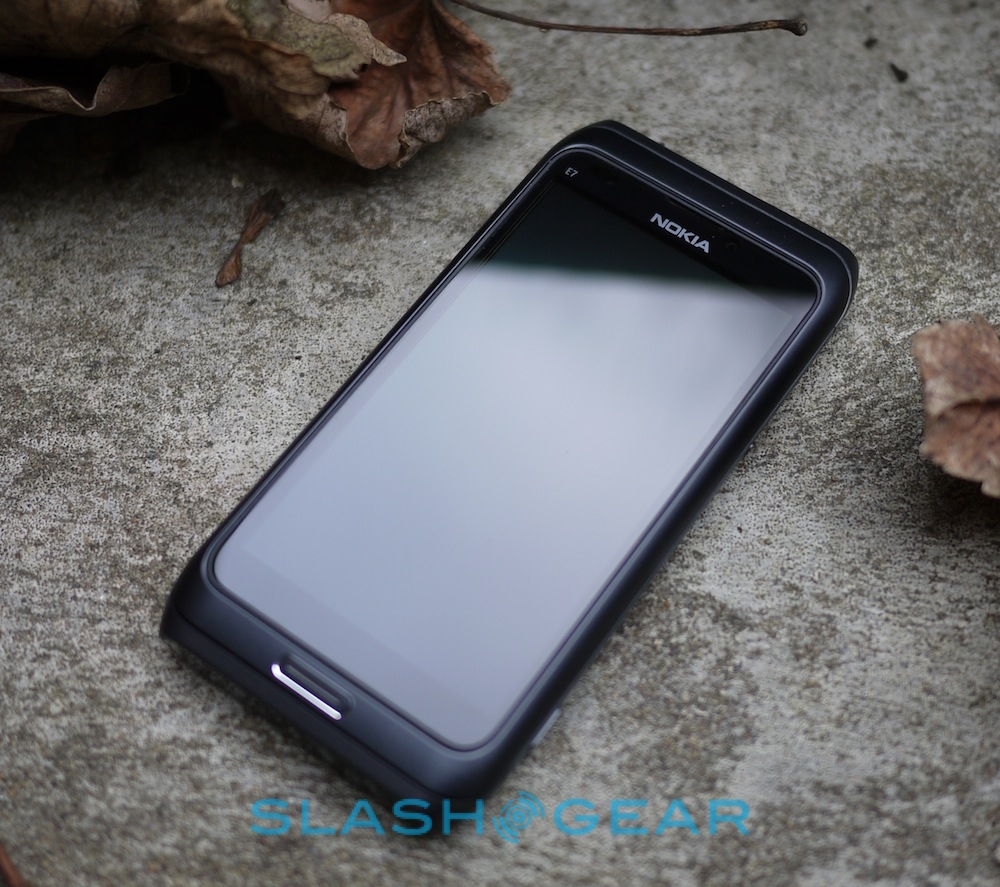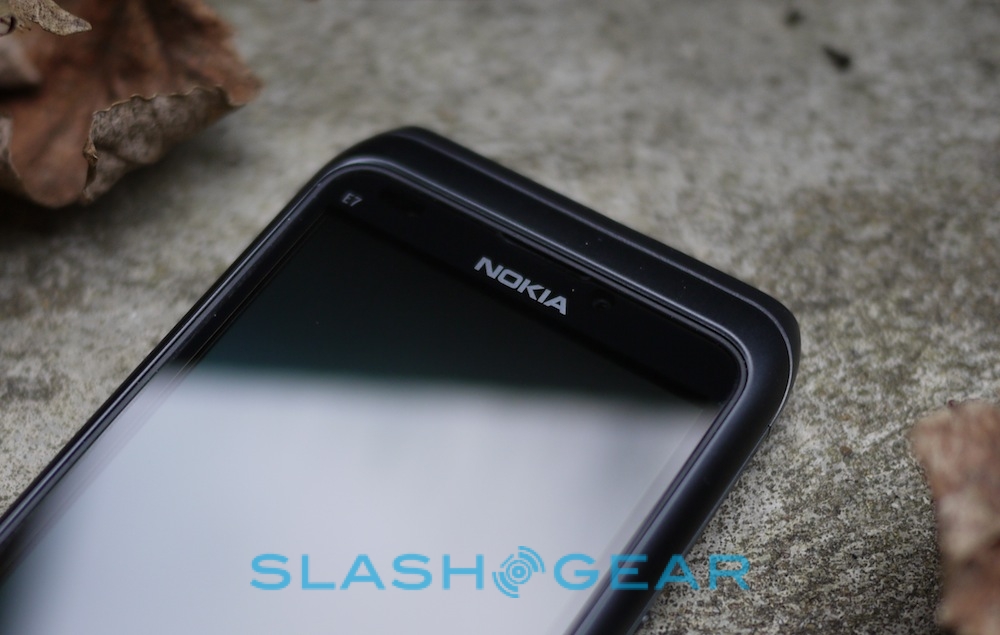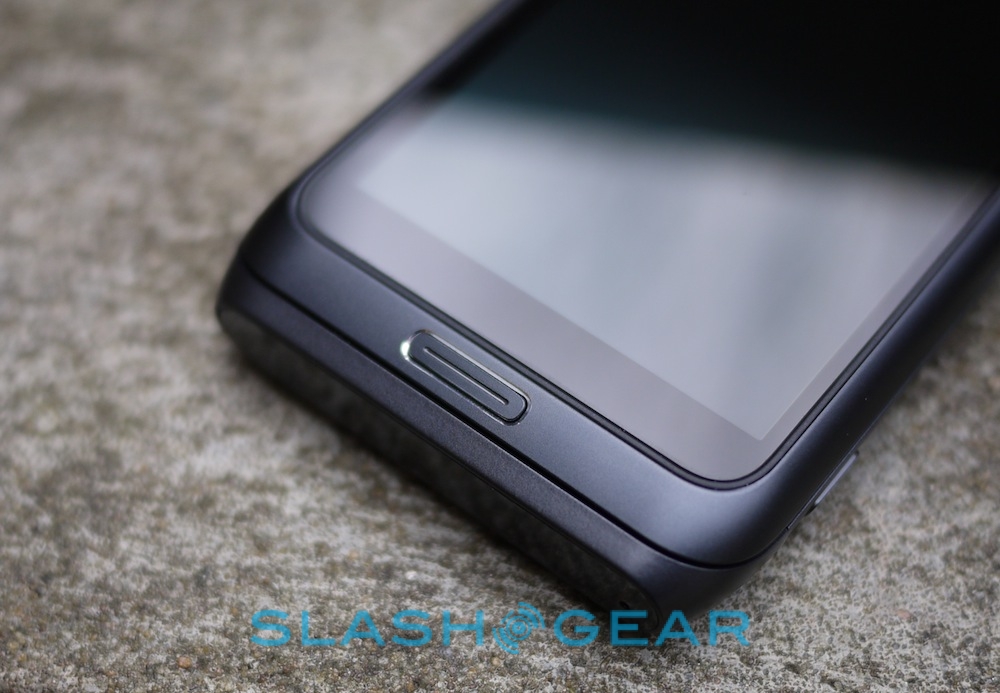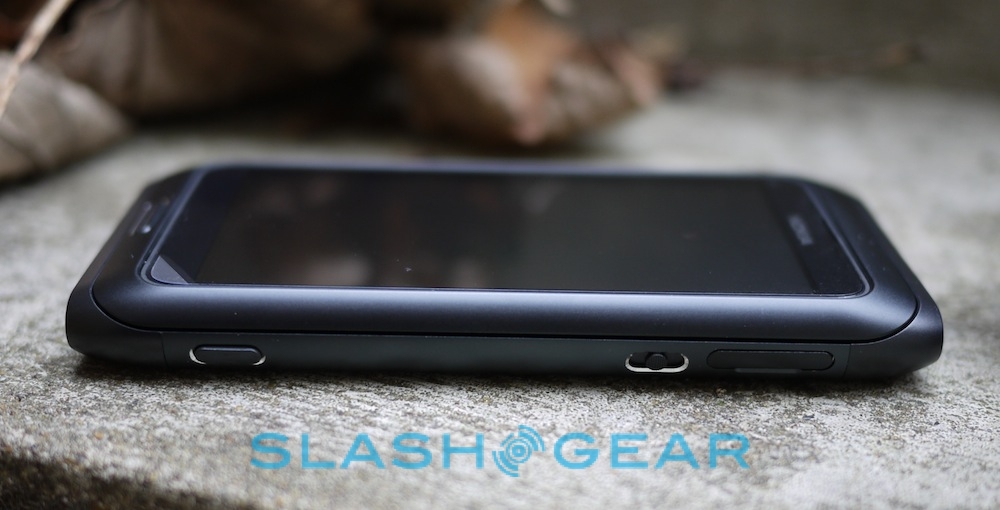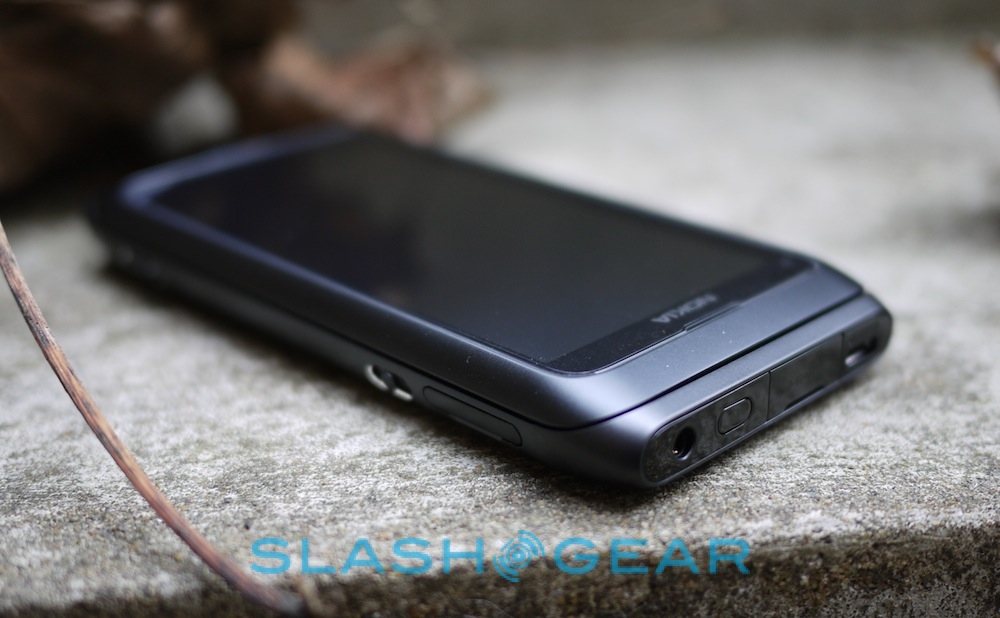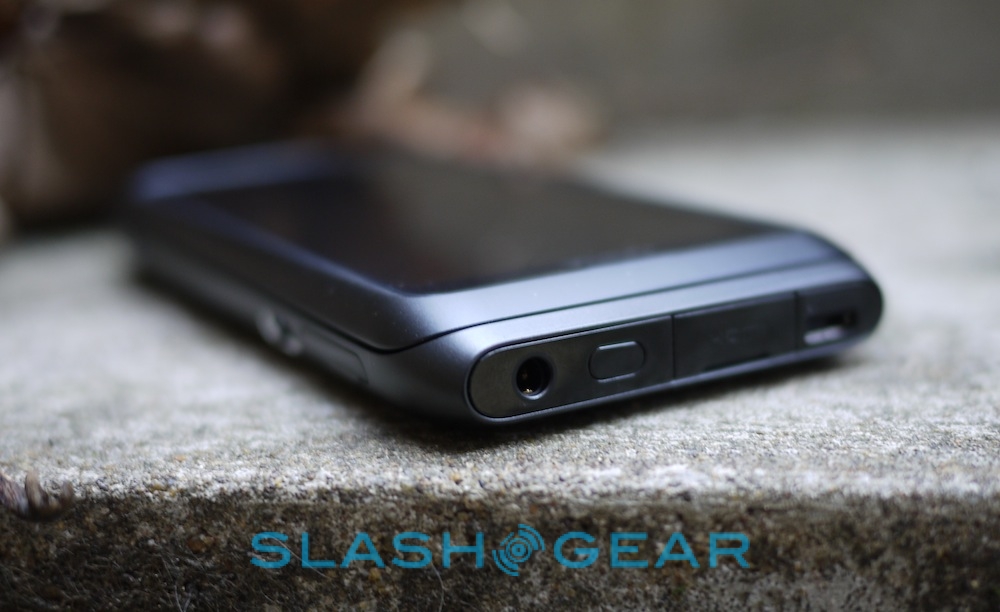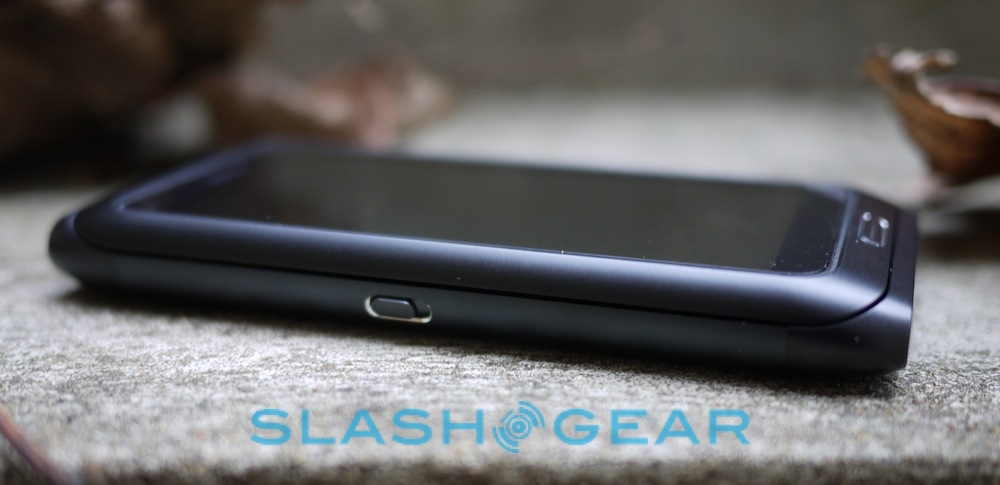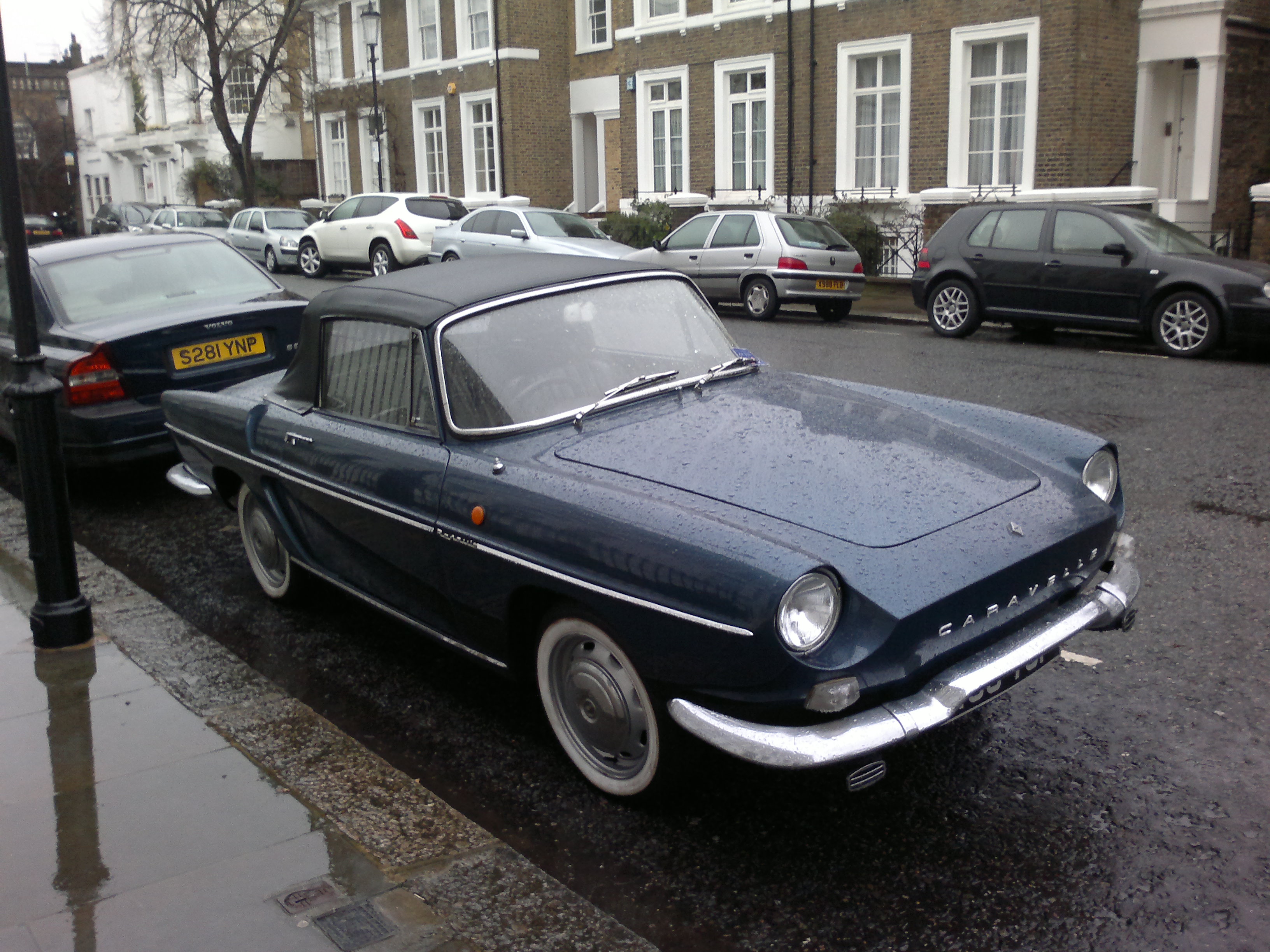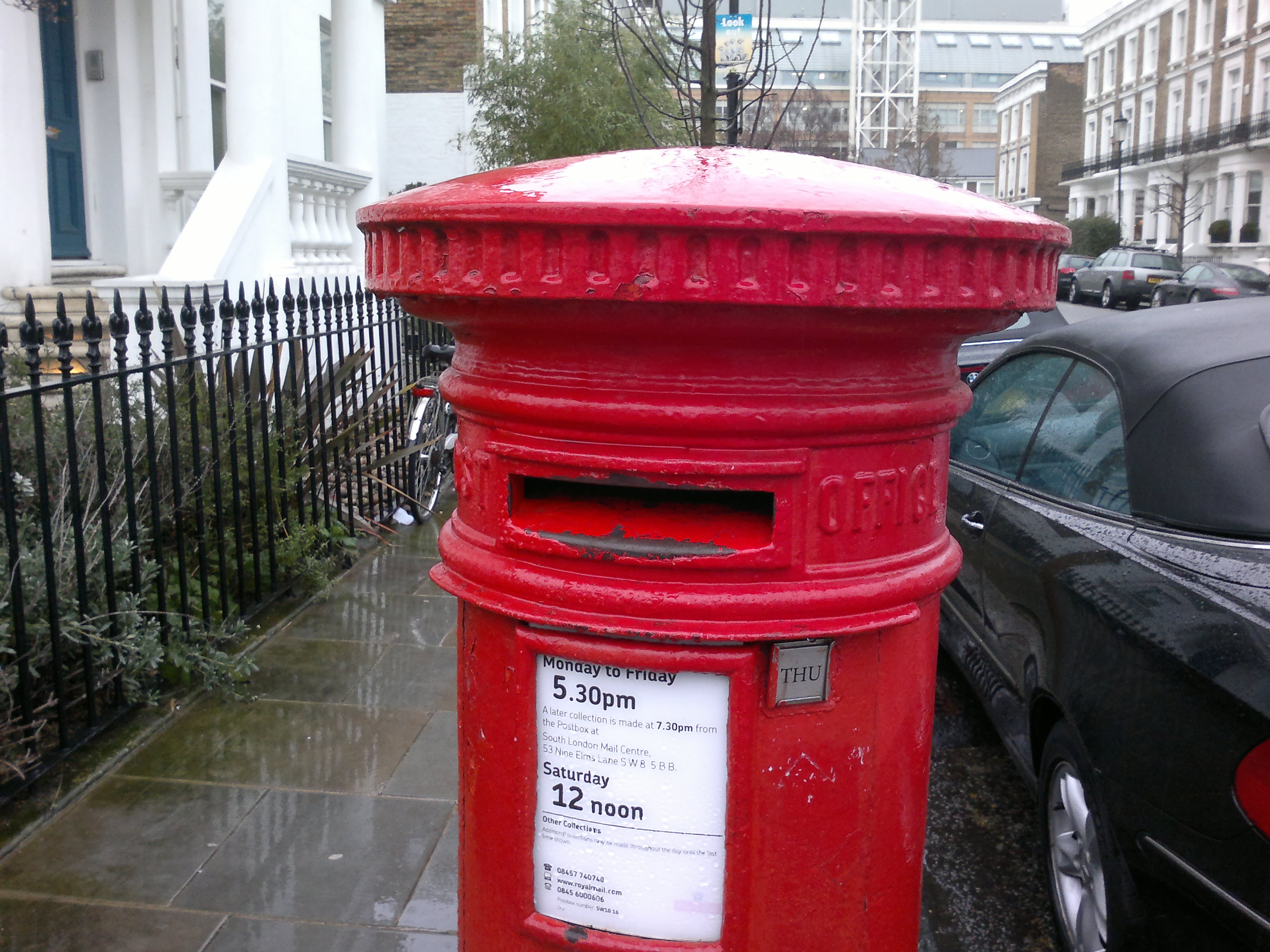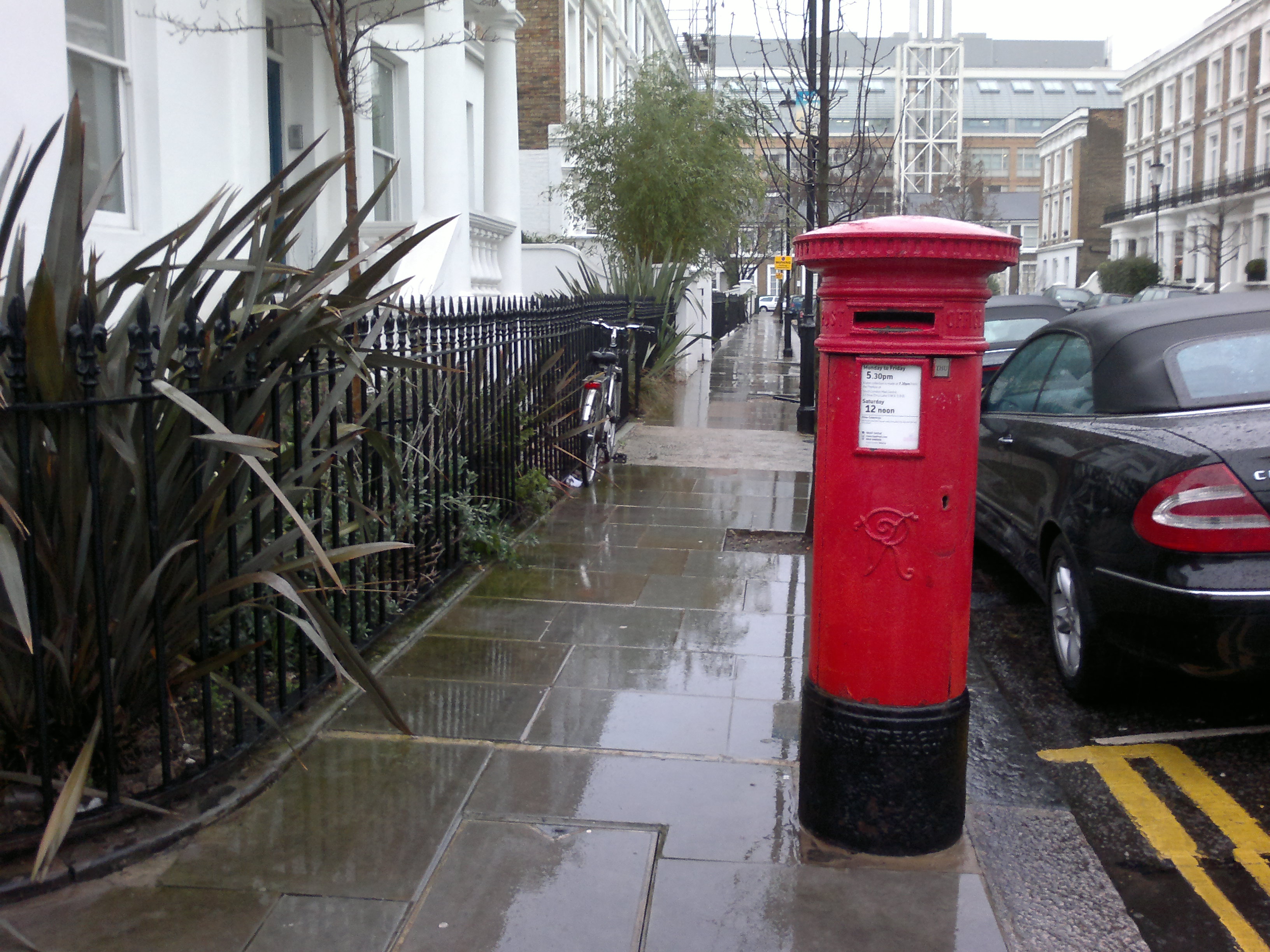Nokia E7 Review
Arriving on the market late, the Nokia E7 finds itself launching at a shaky point in the Finnish company's history. Under new management, suffering doubts – internal and external – over the strength of its current platforms, and watching increasing amounts of attention and revenue being taken by key rivals like Apple, Nokia has high expectations for its new business flagship. Misplaced, misguided or money in the bank? Check out the full SlashGear review after the cut.
Hardware
The E7 may be the largest of the recent Symbian smartphones – looking at first glance like an oversized N8 and significantly chunkier than the svelte C7 – but inside it's business as usual. Keeping Symbian moving is a 680MHz ARM 11 processor, paired with 256MB of RAM and OpenGL 2.0 graphics support. Connectivity follows Nokia's throw-in-the-lot pattern of recent devices, with pentaband UMTS/WCDMA (supporting Euro, T-Mobile USA and AT&T 3G bands in a single device), WiFi b/g/n, Bluetooth 3.0, GPS/A-GPS and an FM radio. Accelerometers, a digital compass, proximity and ambient light sensors, and a front-facing camera for 3G video calls round things out.
The E7 may measure 123.7 x 62.4 x 13.6 mm but there's still been some compromise in terms of fitting everything in. Gone is the N8's FM transmitter and microSD card slot, leaving only the 16GB of fixed storage, and there's no 2mm charging port either. Instead, you get a microUSB port and mini HDMI output, and Nokia bundles both an HDMI adapter (to get a full-sized port) and a USB Host adapter (to plug in a keyboard, mouse, or USB drive) in the retail box.
Nokia E7 unboxing & hands-on:
[vms 6f390014916069369453]
The camera also gets a downgrade in comparison to the N8, a mere 8-megapixels versus the photo flagship's 12-megapixels, and using EDoF (Extended Depth of Field) rather than active auto-focus. It also has a dual-LED flash rather than Xenon. Still, the smaller camera module does allow Nokia to do away with the N8's unsightly hump.
Controls are limited to a power/profile button on the top edge (in-between the HDMI and 3.5mm headphones ports), a volume rocker and camera shortcut on the right edge, and a lock switch on the left edge. All are beautifully bevelled, the silver aluminum glinting against the matte black finish. A backlit home/menu button sits underneath the 4-inch capacitive touchscreen. That display runs at an underwhelming 640 x 360 resolution – given the size, the pixels are clearly discernible – but the quality of the 16m color AMOLED panel, using Nokia's Clear Black branded technology, is almost enough to make us forgive the pixel shortage. Colors are rich, blacks inky and the E7 holds its own on all but resolution when put next to a Samsung Super AMOLED screen.
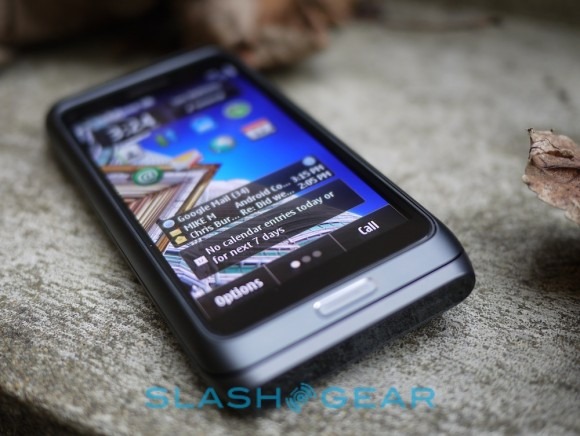
You honestly have to search hard to find a hardware point on which to criticise Nokia. The Finnish company has built a reputation for rock-solid phones – at the budget end and at the premium end – and the E7 is no different. Our only complaint is a slightly rattly lock switch, and when that's the sum flaws of a handset then the company is obviously getting something right. Of course, we knew that from the N8; what the E7 introduces is a brilliant QWERTY keyboard as well.
We had high hopes for the E7's 'board after Nokia World 2010, even having only played with the prototypes the company brought to the show, and the production models don't disappoint. A nudge at the left edge pops the spring-loaded display open with a pleasing thunk, tilted at a useful angle. The keys themselves consist of four rows of slightly domed, hard backlit buttons, with a broad spacebar and dedicated @ and arrows. Numbers share the top row of letters, triggered with the function key.
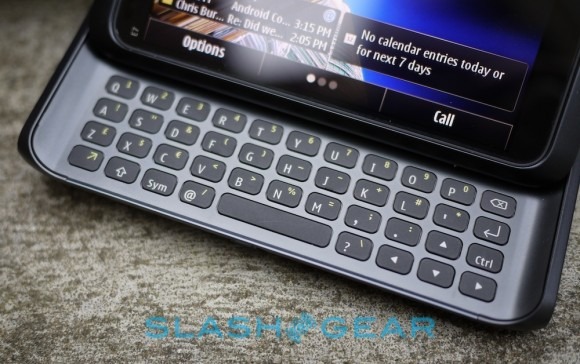
The whole thing is perfect for holding two-handed and thumbing out emails and texts. The buttons have just the right amount of resistance and travel – far better than the membrane panels we've seen on, say, recent Motorola Android phones – and you can even put the E7 flat on a table and use four fingers for speedier typing. Nokia bills the E7 as the new Communicator, and fans of those business-phones' full keyboards won't be disappointed.
Software
The E7 runs Symbian^3, the same PR1.1 release as just made public for the N8, though of course renamed PR1.0 for the newer device. That makes it instantly familiar to existing users, but also means it faces the same uphill struggle to convince would-be buyers that Symbian remains competitive in the face of Android, iOS and other platforms.
It can be easy to overlook Symbian's strengths. The 680MHz processor may be old tech in comparison to the newest 1GHz single- and dual-core chips we've seen on recent Android devices, but it's certainly sufficient to keep the E7 moving along swiftly. The only real sluggishness we've noticed has been in the native Symbian browser, where complex webpages could be slow to render or navigate around. The flip side, of course, is that a low-power CPU means less battery consumption, something we'll touch on later.
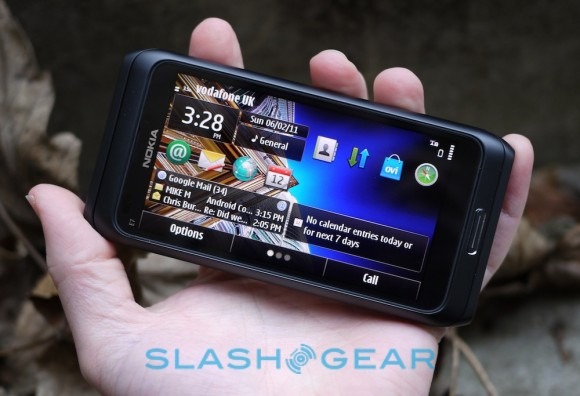
As on the N7, C7 and C6-01, the E7 has the same three-pane homescreen, each with room for up to six widget blocks. Options include email (with the two newest messages from the inbox shown), calendar, speed-dials, sets of four app shortcuts, media controls and entertainment news from Paramount and others. Alternatively there are more on offer to download in Nokia's Ovi Store. Bizarrely, Nokia continues to insist on introducing artificial lag in swiping between the three panes, something which belies the capacitive touchscreen's actually responsive performance.
Beyond that it's generally Symbian as standard. Preloaded is the Ovi Store, Nokia's photo and video editing apps, QuickOffice and Ovi Maps, among others. Ovi Maps in particular has evolved into a capable Google Maps alternative, complete with turn by turn directions, offline mapping data support and various third-party POI, recommendation and review services. There's also rudimentary social networking integration, capable of pulling in Facebook and Twitter updates and pushing them to a homescreen widget, though nothing as comprehensive as we've seen on Android. Nokia's sharing functionality falls well short as well; perhaps we've been spoiled by Android's all-inclusive Share feature, which offers both the platform's homegrown apps and any compatible third-party methods as well, but Nokia's standard options – by email, message or Bluetooth, or on Facebook or Twitter – fail to open up to other apps you might download from the Ovi Store.
Symbian's perhaps tired UI will be refreshed in a software update expected later this year, and that really can't come too soon. Little things, like the absence of a QWERTY keyboard in portrait orientation – instead you get a T9-style numeric keypad with numbers – jar the user experience somewhat, though at least the E7 has its physical 'board to salve the pain. Filling in text boxes using the on-screen keyboard (both portrait and landscape) still insists on calling up a separate dialog pane, though thankfully the same isn't true when you're using the hardware keyboard.
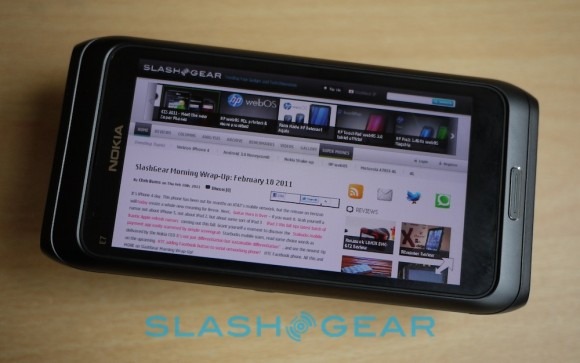
Nokia's native browser is also due for an overhaul, useful since right now it's outclassed by rival devices. There's Flash Lite 4 support (for most Flash Player 10.1 content), which is welcome, but there's no text-reflowing on zoom which makes for plenty of pinch-zooming or panning if you want to read blocks of text. The relatively low screen resolution also makes its presence known; where on rival devices with similar-sized displays you can often read text at low levels of zoom, the E7's 640 x 360 simply lacks the pixels for that degree of crispness.
The Ovi Store offers some salvation, with the popular Opera Mobile Browser being one of the most downloaded titles (and offering a far better online experience). There are also mainstream titles like Skype – which works very well for voice and IM chat – and popular Twitter app Gravity (which we still say Nokia should buy and install as standard). Unfortunately, there are also plenty of gaps where rival platforms iOS and Android have big name apps; it's worth exploring the Ovi.com site to see if anything you particularly rely on is available on Symbian yet.
For enterprise, out of the box there's support for multiple email accounts – with presets for Exchange, Gmail, Yahoo! Mail, Ovi Mail, Hotmail, and various ISP accounts – together with threaded SMS and MMS conversations. There's also a Message Reader app, which will do text-to-speech from your inbox. With the right capacitive stylus (not included) you can also use handwriting recognition, though we don't imagine many will opt for that over the physical keyboard. Finally, there's VPN support for those needing to access private networks, and a SIP client that tightly integrates VoIP services into the native contacts app.
Camera
Nokia has built a reputation for high-quality cameras on its mobile devices, and the E7 follows some way in that tradition. As we said, the limitations of space mean the 8-megapixels have to make do with EDoF rather than true auto-focus, and a dual-LED flash rather than Xenon. Still, it does mean you can use the LEDs as a video light, and the E7 will shoot 720p HD clips at 25fps that can then be easily played back via the HDMI port. A second, VGA-resolution camera on the front is intended for video calls, but can also be used to shoot grainy stills.
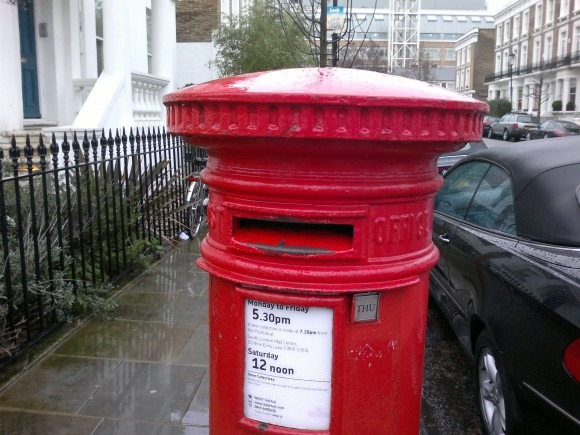
The end result is similar to what we saw on the C7: decent general scenes, but a real struggle with macro and close-up shots. The EDoF system simply can't handle getting up too close, as you can see in the macro sample in the gallery. Otherwise it's a good showing, with accurate colors and crisp edges. The speed between shots is also impressively fast. It's worth noting that it was a grey and dreary day when we took the sample shots, which the E7 still managed to make the best of.
Video, meanwhile, only really smears during the fastest pans, and the quality is solid for 720p HD on a cellphone. Detail can be prone to blurring at times, however. You can see a sample clip below. Being able to hook up an HDTV via HDMI (as long as you've remembered the adapter cable) is useful, and quality is solid.
Phone and Battery
On another device we'd save some serious words of criticism for a sealed-in battery, but the E7's frugal CPU actually leaves the smartphone capable of a couple of days' use from a single charge. Impressive stuff, given the size of the display and the fact that we had Gmail regularly checking throughout. On the flip side, we didn't reach for the E7 to generally play with apps and the internet as much as we find ourselves doing with, say, an Android device, so that somewhat reduced use needs to be accounted for too.
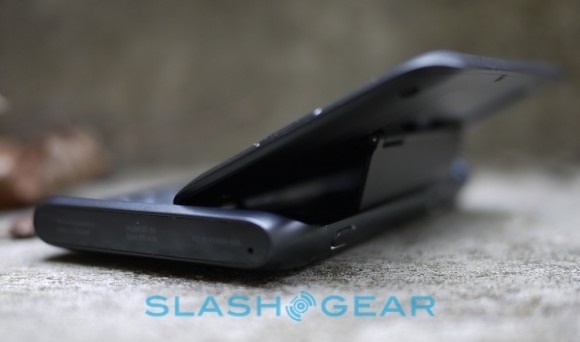
Phone performance is solid, as we've come to expect from Nokia, though the absence of the camera hump meant that the speakerphone sounded a little more muted than on the N8. It's possible to set the E7 to automatically kick into speakerphone mode when the display-slide is opened.
Wrap-Up
There are several reasons for which we want to love the Nokia E7. The physical design is cleaner than the N8, build quality puts rival handsets from Samsung and LG to shame, the physical keyboard could give RIM nightmares and, mediocre display resolution aside, Nokia's hardware spec sheet is bulging with everything the smartphone needs to be taken seriously. Even the relatively underpowered CPU makes sense when you look at battery life and the moderate demands Symbian makes of it.
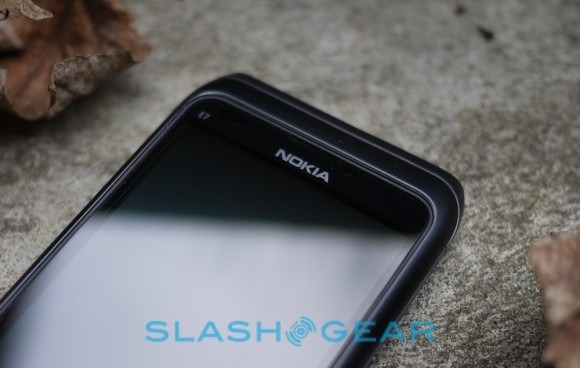
Unfortunately, as with the N8 and C7, solid, beautiful hardware isn't sufficient in today's smartphone market. Symbian remains the sticking point for us and for many users; serviceable, but lacking the flare, ambition and ease of use of rival platforms. Yes, it can be coaxed into doing much of what the majority of us expect from a high-end device, but it feels workmanlike where now we expect magical.
If the Nokia E7 was running Android, or Windows Phone 7, it would undoubtedly be a best-seller. Nokia's quality design and construction are rightly admired, and for text entry the E7's physical keyboard is superb. Where the original Nokia Communicators drove innovation in the mobile segment, however, blurring the lines between phone and computer, the E7 falls short. Symbian fans will love it, but the E7 won't open up the market any more than the N8 and C7 before it.

